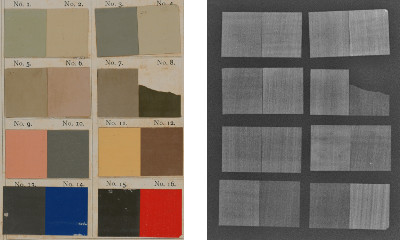X-Ray Imaging (Radiography)
Microtrace’s portable x-ray imaging system (TXR Dragon X SPSL) is a versatile instrument that allows our scientists to scan samples of any size quickly for hidden contaminants. X-ray imaging is a non-destructive technique ideally suited to the isolation and detection of adulterants whose density contrasts with that of their surroundings (e.g. a metal screw in a pastry).
This instrument can assist in a wide-range of analyses from art and antiquity authentication to product contamination in manufacturing, pharmaceutical, and food industries, and even to forensic cases where a rapid large-scale scan of clothing or other evidence can identify and isolate individual specimens (e.g. glass fragments) for targeted and detailed microanalysis.
The Dragon x-ray system permits adjustable sensitivity through a range of parameters allowing our experts to fine-tune the energy and spectrum of radiation. Modifying these elements allows us to control the attenuation and penetration of photons through the sample to maximize quality and contrast of the images.
Radiography in Art
Radiography (x-ray imaging) is a well-established technique in the art world. It is used to visualize the internal structure of a painting. This may include underlying layers, wood panel, ground, and pictorial layers.

Artists have traditionally used leaded paints for a variety of colors, including whites. The left image (above) shows the visual appearance of various lead-rich paints on paper under normal white light. The left image shows these same paints by radiography. Not only have the brush stokes become obvious, but the presence of heavy elements (in this case, lead) are illuminated. For example, the red pain on the bottom right (No. 16) appears significantly lighter by radiography than the dark gray/black pain (No. 15) to its left. This indicates that the red paint has a higher concentration of lead.
How May We Help You?
Contact usto discuss your project in more detail.








